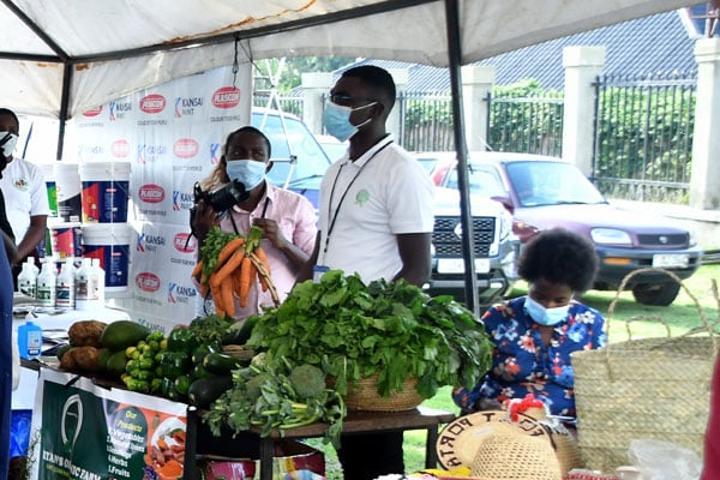Africa-Press – Uganda. Ugandans increased spending on vegetable imports in 2022, rising to Shs69.03b, data from Uganda Revenue Authority (URA) shows.
The spending, which rose by Shs20b, was higher than the Shs49b the country spent on vegetable imports in 2019.
The details are contained in the URA May Annual Import Trade Report, 2022, which indicates that Uganda spent Shs36.13 trillion on imports, of which China, United Arab Emirates (UAE), India and Kenya were the key source countries.
Imports worth Shs7.19 trillion were sourced from China, while UAE, India and Kenya contributed Shs5.43 trillion, Shs4.28 trillion, and Shs2.73 trillion, respectively. Kenya is Uganda’s largest source of imports in East Africa. It is followed by Tanzania, which during 2022 contributed about Shs1.01 trillion.
During the period, the report noted, vegetables were among thousands of items imported into Uganda with frozen and dried leguminous vegetables standing out.
Frozen vegetables worth Shs48.96b were imported in 2022, while Shs10.28b was spent on shelled dried leguminous vegetables.
However, the report does not provide a breakdown of the type of vegetables that were imported.
A 2019 Ministry of Finance report showed that Uganda largely imports edible vegetables such as potatoes, fresh chilled tomatoes, fresh or chilled onions, shallots, garlic, leeks and cabbages. Others are cauliflowers, kohlrabi, kale, lettuce, chicory, cucumbers, carrots, salad beetroot and turnips.
URA further indicates that Uganda spent Shs8.08b on frozen and unfrozen vegetables preserved other than by vinegar, while Shs870m was spent on dried vegetables.
The increase in imports exerts pressure on the shilling, which during 2022, experienced a lot of volatility partly due to a large import bill far outstrip dollar inflows from exports.
The URA report also indicates that Uganda spent Shs370m on flour and meal of dried leguminous vegetables, Shs250m on vegetables preserved by vinegar, Shs120m on fresh or chilled vegetables and Shs70m on shelled and leguminous vegetables. Additionally, Shs30m was spent on vegetables provisionally preserved, not for immediate consumption.
Uganda, the report indicates, sources much of its vegetable from as far as China, UAE, South Africa and Europeans countries.
In East Africa, vegetable imports largely come from Kenya and Tanzania. Of the Shs69.03b, frozen vegetables take the highest portion of Shs48.96b while shelled dried leguminous and other vegetables preserved other than by vinegar, take up Shs10.28b and Shs3.44b, respectively.
Uganda is largely an agrarian economy experts wonder why vegetables such as carrots, which are also grown here, have to be imported.
Ms Agnes Kirabo, the Food Rights Alliance executive director, said it is unfortunate that Uganda, an agrarian economy, can afford to give away foreign exchange to import vegetables, some of which are grown locally.
“We are giving away jobs [and] paying farmers from other countries,” she said, noting that there was need to find a way through which money spent on some vegetable imports can be preserved in the economy.
Mr Henry Kimera, the head of Consumer Education Trust, said the imports could be a result of season disparities, which sometimes create an imbalance between supply and demand.
For More News And Analysis About Uganda Follow Africa-Press






